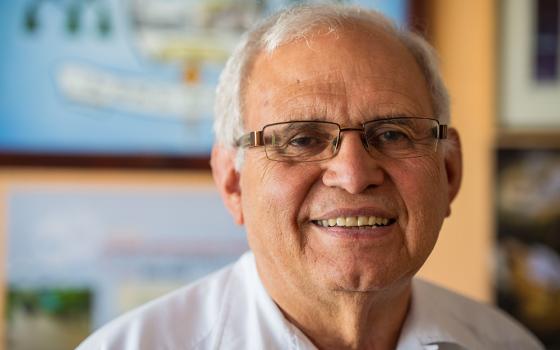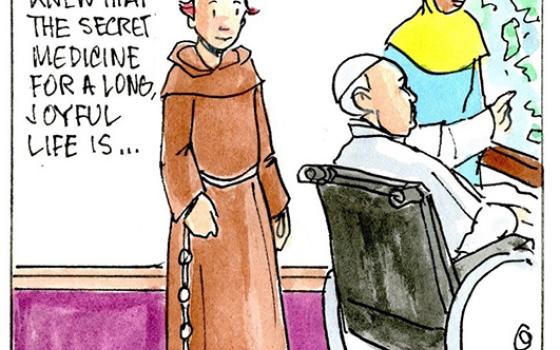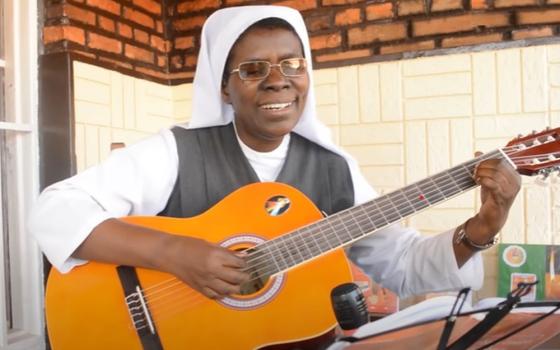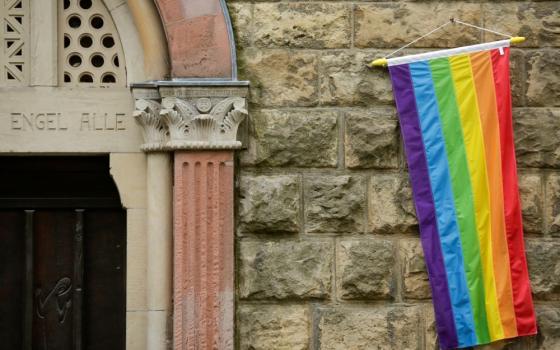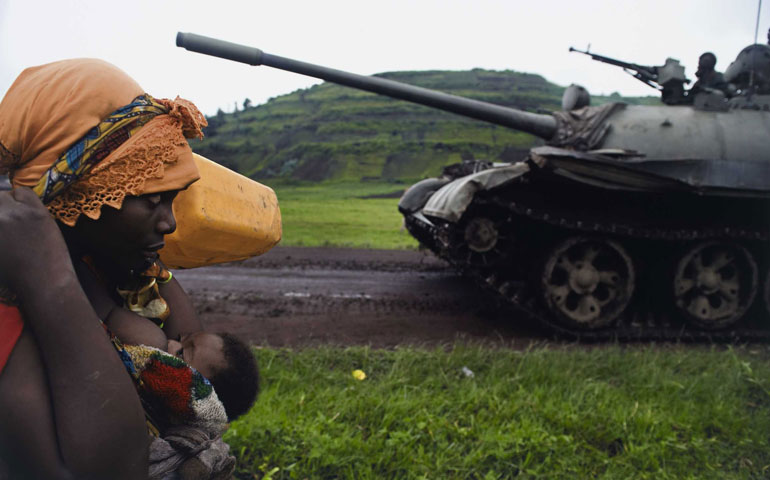
War is both a universal and personal subject matter with many facets. So many facets, in fact, that various war photographs can be described as touching, artistic, beautiful and chilling. When an exhibit can elicit so many profound and deeply felt emotions on such a wide spectrum, it is almost sure to touch virtually anyone who comes to view it. "WAR/PHOTOGRAPHY: Images of Armed Conflict and Its Aftermath" is an all-encompassing exhibit. It includes famous and infamous images as well as lesser-known prints to provide an overview of virtually every aspect of war.
The exhibit premiered at the Museum of Fine Arts, Houston, on Veterans Day, Nov. 11, and is open through Feb. 3. It then moves to the Annenberg Space for Photography in Los Angeles, then to the Corcoran Gallery of Art in Washington, D.C., and finally the Brooklyn Museum in New York.
"War is the most barbarous and least effective way of resolving conflicts," Pope John Paul II said, and many powerful images in this collection can attest to that belief. Kenneth Jarecke's "Incinerated Iraqi" illustrates this point. Taken during the first Gulf War in 1991, all you can see is a dead Iraqi soldier's face above the truck seat he was trying to climb over when he was burned alive. It is a haunting image because even though the man has been burned beyond all recognition, his face retains his last expression, his humanity. It is a vivid reminder of the very real casualties of war.
Robert Clark's photos of the Sept. 11 attack on the World Trade Center buildings may also be chilling to many who remember that fateful day in 2001. The four photos show the sequence of events: The first shows a tower smoking after the first plane's collision with the second plane on the way, the second photo shows the second plane coming closer to the second tower, the third shows the second collision, and the final photo, shown in a larger format, shows both towers on fire and smoking. Though not as bloody or graphic as others, they have become iconic and can still provoke an emotional reaction because of what they represent: a surprise terrorist attack on U.S. soil.
Though most people will expect images of raw fighting and combat, other photographs in the exhibit depict less exciting, but equally important, aspects of war. Photographs of recruiting and training practices, for example, may not be emotionally gripping, but they can be aesthetically pleasing. Damon Winter's "Flying Military Class," taken in 2010, features the First Battalion, 87th Infantry and makes excellent use of leading lines in two ways. First, there is a half circle that is formed from one side of the plane to the other with the troops in the middle; the eye is also drawn in a line backward to a vanishing point created by the lines of troops leading to the back of the cockpit area. In addition to these pleasing lines, there is a wide variety of expressions on the soldiers' faces. Some are resting and others are talking, while still others seem to be ruminating privately.
Eduard Korniyenko's "Say Ahhh," taken in 2005, shows a doctor examining a group of conscripts at a recruiting station in Russia. Since the men are squatting with their hands on the backs of their necks, their arms create diagonal lines that lead to the doctor who is standing behind them. In many of these photos, recruits preparing for a variety of wars show expressions of joy, excitement and, in some cases, eagerness to fight. As the timeline into and out of the wars continues, however, those expressions become more somber and serious.
Though the majority of these photographs show a specific person in a specific moment, they have the ability to transcend that fixed point in time and, in the process, represent many millions of people who are, have been or will be involved in a similar act of war. In other words, the human element is what makes these photographs so relatable to so many people. Other qualities present in the photograph sometimes enhance that element.
Henri Huet's black-and-white 1966 photograph of a deceased American paratrooper being lifted into a helicopter shows the humanity in the midst of the war in Vietnam, appealing to one's emotions. One could even see the religious overtones with the fallen soldier rising from Earth and into the sky. At the same time, the aesthetic qualities of the photo itself keep the attention of the viewer. The photograph catches your eye because the perspective is atypical; shot from directly beneath the paratrooper and helicopter, the subjects are backlit by the bright sky above them, rendering them as silhouettes, their darkness contrasting with the seemingly white sky.
Walter Astrada's 2008 photograph of a Congolese woman fleeing to Goma is another example of the human element resonating with viewers. The leftmost third of this image is filled by a Congolese woman who walks as she breastfeeds her baby and carries her belongings. Any preconceived notions and feelings of this maternal portrait are shattered as you see that the woman is looking, not at her baby, but at an army tank she is walking past. The tank fills in the other two-thirds of the photograph, and the dull green and darker shades complement the brightly colored clothing the woman is wearing. The cognitive dissonance created by two opposing ideas in the same photograph -- the soft kindness and tenderness of a mother and her child faced with the unbending, hard and structural roughness of the army tank and the war it represents -- gives the image great impact.
Even in the midst of war, however, there are moments when its participants show respect and kindness and exemplify the meaning of laying down one's life for a friend. Huet made an image of American photojournalist Dickey Chapelle, one of the first female war correspondents in World War II, the Korean conflict and Vietnam, receiving the last rites after being fatally hit in the neck by shrapnel in 1965. The chaplain's face is barely visible as he looks down and administers the rites above her crumpled fallen form. Though not particularly appealing in a photographic sense, the focus of the image is the delicateness in the last moments of a celebrated photojournalist's life.
The "WAR/PHOTOGRAPHY" exhibit shows that though the phrase "war and peace" implies they are opposites, it is more accurate to say that peace is more than the absence of war, as stated in Gaudium et Spes, the Pastoral Constitution on the Church in the Modern World. According to this document, peace is not only present when there is no war, but it is "an effect of justice." Therefore, if justice were present and upheld all over the world, there would be no reason for war and all people's dignity would be respected. Until all the societies of the world are able to achieve such justice and consequent peace, we will need to be reminded of the stories and consequences of wars through photographs that touch us and allow us to remember the humanity present in us all that is affected by such actions.
[NCR Bertelsen intern Eloísa Pérez-Lozano holds a master's degree in journalism with an emphasis in photojournalism from Iowa State University, Ames, Iowa. Her email address is eloisapl@ncronline.org]

